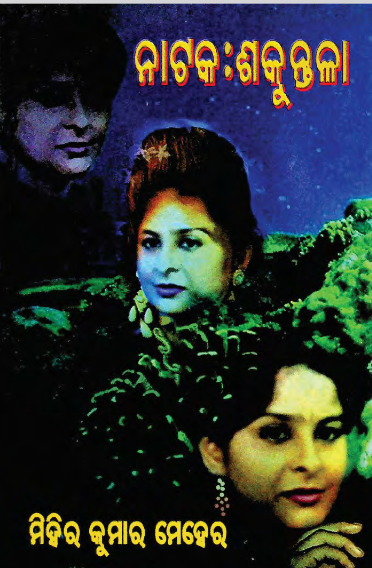Nataka, Sakuntala, authored by the talented Mihir Kumar Meher and published in the year 2000, is a remarkable contribution to Odia drama literature that deftly intertwines classical themes with contemporary sensibilities. This modern retelling of the ancient tale of “Sakuntala,” originally penned by Kalidasa, captures the essence of love, identity, and the complexities of human emotions, all while retaining the rich cultural heritage of Odia literature.
The narrative revolves around the poignant love story of Sakuntala and King Dushyanta. Sakuntala, the daughter of sage Vishwamitra and the nymph Menaka, epitomizes grace and virtue. When Dushyanta encounters her in the serene and picturesque forest where she resides, an instant connection ignites, leading to a heartfelt romance. However, the story’s central conflict arises when Dushyanta, compelled by the constraints of his royal duties and the expectations of society, forgets Sakuntala due to a curse cast by a sage. The ensuing drama encapsulates the themes of longing, loss, and the struggle to reclaim one’s identity in a world filled with external pressures.
Meher’s “Nataka, Sakuntala” is distinguished by its vivid character portrayals. Sakuntala is portrayed as a strong, independent woman who embodies both vulnerability and resilience. Her inner turmoil and emotional journey become central to the narrative, inviting readers to empathize with her plight. Dushyanta, on the other hand, is depicted as a conflicted king whose love is genuine but clouded by his responsibilities. Their relationship serves as a microcosm of the larger societal constraints that individuals often face, making their love story both timeless and relatable.
One of the most striking elements of Meher’s adaptation is the exploration of memory and identity. The amnesia that befalls Dushyanta not only serves as a plot device but also as a metaphor for the ways in which individuals can become disconnected from their own truths. The play delves into the existential anguish faced by both protagonists, highlighting the profound impact of love on personal identity and destiny.
Meher also weaves in themes of nature and spirituality, reflecting the harmonious relationship between the characters and their surroundings. The lush landscapes of the forest are not merely backdrops; they symbolize the emotional states of the characters, amplifying their joys and sorrows. This connection to nature serves to ground the ethereal romance in the tangible world of human experiences.
Mihir Kumar Meher’s writing style in “Nataka, Sakuntala” is characterized by lyrical beauty and rhythmic precision, akin to the traditional practices of Odia theatre. The dialogues flow seamlessly, allowing for a dynamic interplay between characters that enhances the dramatic tension. Meher skillfully utilizes idiomatic expressions and cultural references that resonate with Odia audiences, ensuring that the play remains rooted in its cultural context while still appealing to modern sensibilities.
In Nataka, Sakuntala,Mihir Kumar Meher presents a brilliantly crafted drama that revitalizes a classic tale for contemporary audiences. Through rich characterization, evocative themes, and exquisite language, Meher not only honors the original story but also provides readers with a fresh perspective on love, identity, and the complexities of human relationships. This edition of “Sakuntala” stands as a testament to the enduring power of storytelling, proving that even ancient tales can find new life and relevance in the modern era.
Books Info
| Books name | Nataka, Sakuntala |
| Author | Mihir Kumar Meher |
| No Of pages | 69 |
| Publisher | Meher Publications |
| Publication | 2000 |
| Printed At | Mahabir Enterprises |
| Distributor | NA |

